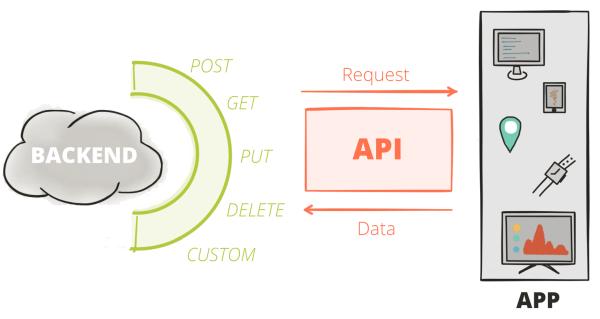If you’ve been on the internet or used applications, you’ve likely heard of the term “API”, which has grown in popularity and exposure over the last few years. Your operating system, apps, and web browsers will all use APIs behind the scenes to deliver a seamless experience to you – but what exactly is an API? This is what we will answer below.

What Is an API?
API is the acronym for “Application Programming Interface”. The best analogy to understand them is to compare them to a restaurant’s menu – hear us out. When you read through a menu you see a list of dishes and explanations. Then, you order your meal, and the kitchen prepares the final product. You never know how the dish is prepared, but it doesn’t matter because you get to enjoy the finished product.
An API is similar because they list functions that developers can utilize in their app. When they choose to use an API like a payment portal, they get to enjoy an easily implemented payment option on their website or app. They don’t know how the API makes it possible, but it doesn’t matter to the developer. When they “order” APIs, API Management Tools are typically used to make them.
They Make a Developer’s Life Easier
If a developer wishes to create an Android app, they can access a range of APIs through the Android Studio. These APIs make life easier by removing the need to create custom scripts and other manual processes. For example, if an app needs GPS functionality, the Google Maps API can be used instead of writing a GPS script from scratch.
They Communicate Between Services
Without APIs, websites and services wouldn’t be able to communicate together. Taking Google Maps as an example again, if you’ve ever seen it on a website, there’s an API key embedded in the code somewhere. There are many different services that can be integrated into websites and apps through APIs, including Twitter feeds, TripAdvisor reviews, text translation services, and much more. Additionally, the OAuth Standard API can be used to allow users to log into services via their Twitter, Google, and Facebook accounts.
APIs Control Resource Access
When you browse the internet and access different websites, you’ll often see popups asking if a site can access your location or send you notifications. When this happens, it’s because the developers used the Google location API and the Windows notification API.
You may be asking why the developer doesn’t just ask permission themselves, which they can grant or deny. However, if this was the case, there would be no way to monitor how the business is using your information, which is why APIs are used. You get to control what information a website can use, and you can change your mind at any time.
Take Out
APIs are digital services developers can use to save time and deliver a seamless experience to users. As well as saving time, they allow different digital services to communicate and grant greater privacy controls to end-users.
